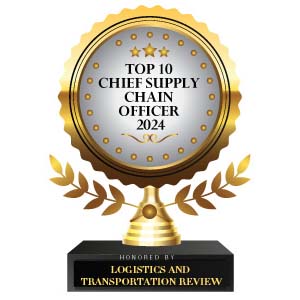Rick Elmore is currently serving as the Chief Supply Chain Officer Global Activewear of Hanesbrands Inc. He has gained a wealth of experience in merchandising, product development, procurement and supply chain management after graduating with a M.S. in Textiles from North Carolina State in 1991. He has been working with Hanesbrands for more than 15 years, where he started as VP, Product Development and was responsible for the development of products, fabrics and materials.
Key Milestones in Shaping Professional Growth
I started my career in roles focused on the front end of business like sales, marketing, merchandising and general management. I moved into supply chain roles since I was more interested in the operational aspects. Despite my job role, I have always maintained a passion for product and surrounding myself with great people.
Reflecting on my career, I recognized three key milestones that have shaped my journey so far. The first milestone was with a small private apparel company, where I focused on product management and marketing. The years I spent in this role allowed me to leverage my BS degree in textile science and hone my product skills through hands on learning within manufacturing and product development. I gained valuable knowledge about raw materials and their conversion through manufacturing processes, along with a comprehensive understanding of product costs. This helped me to identify and create product solutions, that exceeded customer expectations while growing revenue and operating profit results for the company.
The second key milestone was to lead a small business unit in the absence of one of our leaders. This opportunity afforded me the position of de facto GM where I handled every aspect of the business. During this time, I realized that I still needed to gain more business knowledge. I remember how I struggled to answer some questions when I presented quarterly result in a CEO review. I didn’t like that feeling of uncertainty and knew I needed to learn more. That was when I decided to pursue my MBA, as I wanted to understand how all the elements of business work together to make better decisions. I enrolled in the Wake Forest Exec-MBA program and dedicated every weekend to classes, utilizing every hour to study and learn. I was able to apply my learnings from the classroom immediately in my job the following week. The knowledge and experience I gained from the program instilled the confidence to take on new challenges and roles throughout my career. My degree, combined with my experience, has allowed me to adopt an enterprise-wide perspective, evaluating decisions from a broad viewpoint.
The third milestone was a culmination of acquisition experience, as I began to evolve my career journey into the global supply chain. I was tapped to be part of a small team to help assess companies for acquisition. Our goal was to determine whether the operational value could be unlocked and leveraged further to enhance sales or improve our overall cost of goods sold (COGs). This drove me to explore more supply chain operational opportunities. I closely engaged with my mentors and leaders to put me on a more purposeful global supply chain career path.
“Adopting a customer-centric and continuous improvement approach will always lead to success in managing supply chain operations and delivering excellence in customer service”
I gradually took on accountability for various supply chain functions, gaining firsthand experience in areas like Product Development, Production Planning, Sourcing, Distribution, Procurement, Quality Control, and Strategic Planning. Eventually, my responsibilities and team size grew and I began shifting from technical expertise to developing and evolving my leadership skills. This transition required me to learn how to lead through delegation and empowering my team, fostering mutual trust. I realized the importance of clearly defining goals to ensure everyone understood expectations and success metrics. I built trust and encouraged my team’s growth and recognition.








